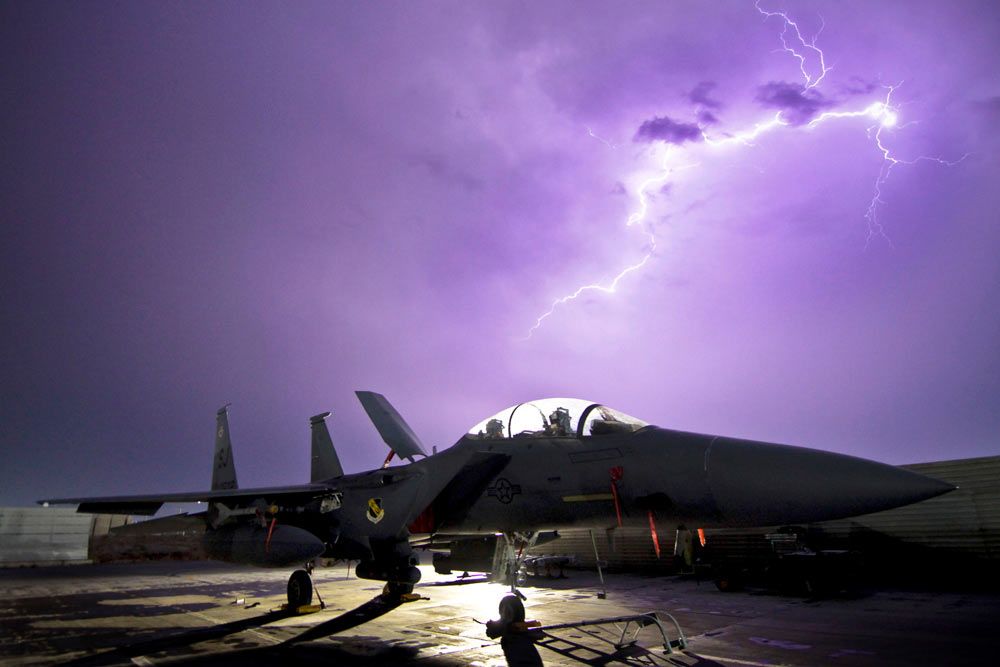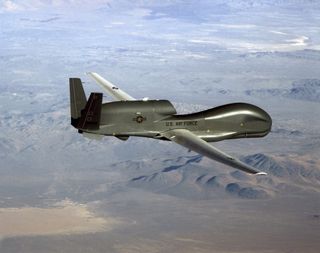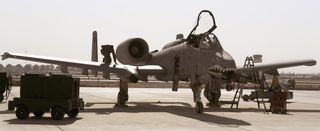These US Weapons Suspected of Counterfeit Parts

Even the best weapons may fizzle on the battlefield if they contain counterfeit parts. A final report issued by the U.S. Senate Armed Services Committee lists a wide range of military technologies that are suspected of having counterfeit electronic parts.
The report found possible counterfeit problems in U.S. military hardware such as Army thermal weapon sights, Navy patrol aircraft, Air Force bombers and even mission computers for U.S. missile defense systems. But the committee hopes that its amendment in the National Defense Authorization Act for 2012 — signed into law last Dec. 31 — can give U.S. defense companies the necessary incentive to screen out counterfeit electronic parts.
"The failure of a single electronic part can leave a soldier, sailor, airman or Marine vulnerable at the worst possible time," the report noted. "Unfortunately, a flood of counterfeit electronic parts has made it a lot harder to prevent that from happening."
The Senate committee's investigation found 1,800 cases of suspect counterfeit electronic parts involving a million individual parts. That staggering figure came from tracking just one part of the military's supply chain from 2009 to 2010. More than 70 percent of those cases led to suppliers in China.
Here are some of the known U.S. military weapons and technologies that may have been affected by counterfeit parts. Many cases are likely to exist beyond the examples named in the report; the U.S. Defense Logistics Agency identified 19 suspected counterfeit parts each used in more than 100 U.S. military systems.
M1128 Stryker Mobile Gun System: An Army eight-wheeled armored fighting vehicle with a 105 mm tank cannon (built by General Dynamics).
M982 Excalibur: A 155 mm artillery shell that uses GPS guidance to accurately hit targets close to friendly troops (Raytheon and BAE).
Sign up for the Live Science daily newsletter now
Get the world’s most fascinating discoveries delivered straight to your inbox.
RQ-4 Global Hawk: An unmanned aircraft flown by the Air Force and Navy to provide long-duration surveillance (Northrop Grumman). [New Game's Fictional Drone Inspires U.S. Military]

B-52 Stratofortress: A long-range strategic bomber that has served the Air Force for over 50 years (Boeing).
F-15 Eagle: An Air Force fighter jet designed to gain air superiority in dogfights (McDonnell Douglas/Boeing).
A-10 Thunderbolt: An Air Force aircraft that uses heavy cannon, missiles and bombs to provide ground support for U.S. troops (Fairchild Republic).
C-5 Galaxy: A heavy transport aircraft used by the Air Force to move huge cargo over very long distances (Lockheed Martin).
C-17 Globemaster III: A heavy transport aircraft used by the Air Force to move cargo (McDonnell Douglas/Boeing).
C-130 Hercules: A heavy transport aircraft used by the Air Force to air-drop troops and supplies into enemy territory, and to serve in many other roles (Lockheed Martin).
C-130J Super Hercules: An upgraded version of the C-130 Hercules used by the Air Force (Lockheed Martin).
C-27J Spartan: An Air Force transport aircraft used to move troops and cargo (Alenia Aeronautica).
P-3 Orion: The Navy's current patrol aircraft, used for hunting down submarines (Lockheed Martin).
P-8A Poseidon: A patrol aircraft being developed to hunt down submarines for the Navy (Boeing).
A/MH-6M Little Bird: A light helicopter used by the Army for special operations missions (MD Helicopters).
CH-46 Sea Knight: A transport helicopter used to move Marines and their supplies (Vertol Aircraft Corp. & Boeing).

SH-60B Seahawk: A Navy helicopter stationed aboard cruisers, destroyers and frigates that can scout, provide fire support for Navy ships, hunt down submarines and attack surface ships (Sikorsky Aircraft).
Navy Integrated Submarine Imaging System: A system that allows sailors to see both visual and digital images through submarine periscopes (Lockheed Martin).
Terminal High Altitude Area Defense: A Missile Defense Agency system designed to defend against incoming ballistic missiles by intercepting them in their final phase of flight (Lockheed Martin, with many subcontractors).
The Department of Defense lacks the resources to screen out Chinese counterfeit electronic parts, according to the report. Some military agencies, such as the Missile Defense Agency, have begun looking for solutions such as using irreproducible DNA markings to mark the authenticity of new parts.
But such solutions won't help the U.S. military deal when it must buy electronic parts no longer made by the original manufacturer. Such scenarios force the military to turn to a chain of independent distributors who may or may not be trustworthy.
The Senate committee hopes changes in the 2012 National Defense Authorization Act can tackle the problem without futuristic fixes. The NDAA specifically orders U.S. defense contractors to pay for the costs of counterfeit parts they supply in U.S. military systems — a way of encouraging such companies to make very sure that they're getting the real deal from their own suppliers.
This story was provided by InnovationNewsDaily, a sister site to Live Science. You can follow InnovationNewsDaily Senior Writer Jeremy Hsu on Twitter @ScienceHsu. Follow InnovationNewsDaily on Twitter @News_Innovation, or on Facebook.
Most Popular




